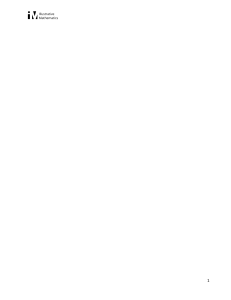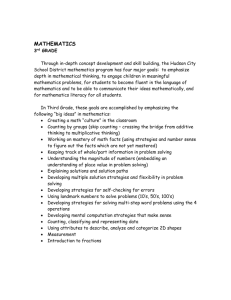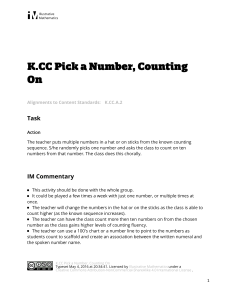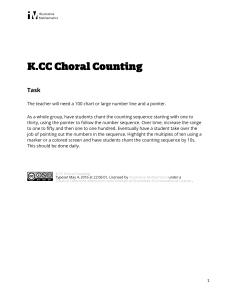Counting Principle: Math Lesson
advertisement
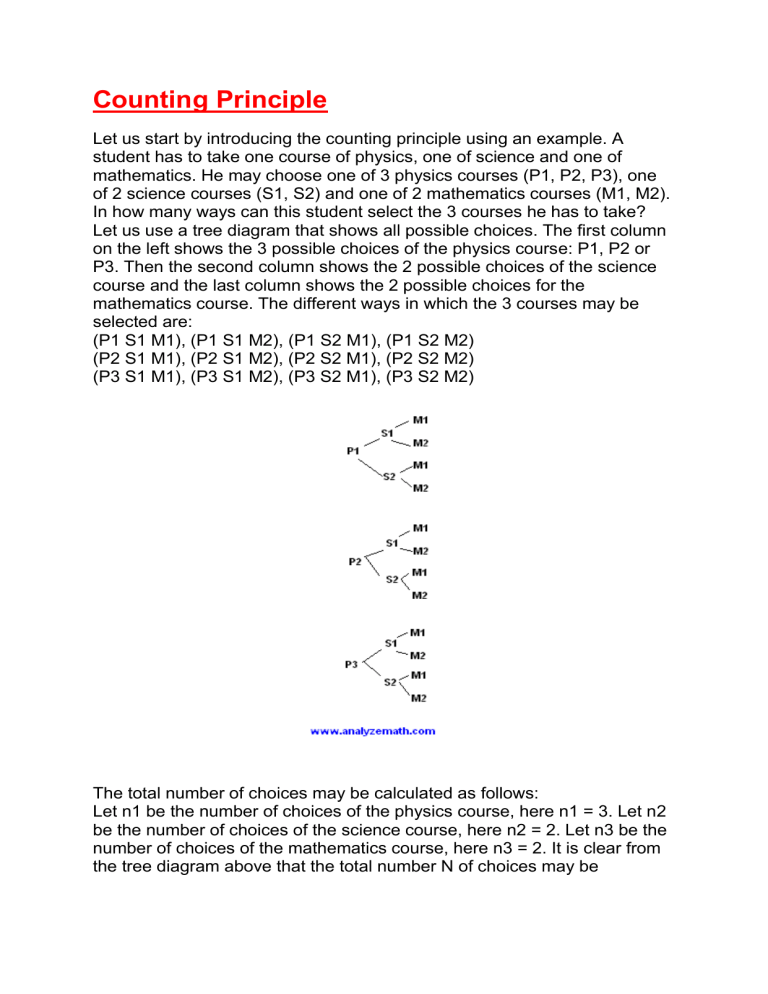
Counting Principle Let us start by introducing the counting principle using an example. A student has to take one course of physics, one of science and one of mathematics. He may choose one of 3 physics courses (P1, P2, P3), one of 2 science courses (S1, S2) and one of 2 mathematics courses (M1, M2). In how many ways can this student select the 3 courses he has to take? Let us use a tree diagram that shows all possible choices. The first column on the left shows the 3 possible choices of the physics course: P1, P2 or P3. Then the second column shows the 2 possible choices of the science course and the last column shows the 2 possible choices for the mathematics course. The different ways in which the 3 courses may be selected are: (P1 S1 M1), (P1 S1 M2), (P1 S2 M1), (P1 S2 M2) (P2 S1 M1), (P2 S1 M2), (P2 S2 M1), (P2 S2 M2) (P3 S1 M1), (P3 S1 M2), (P3 S2 M1), (P3 S2 M2) The total number of choices may be calculated as follows: Let n1 be the number of choices of the physics course, here n1 = 3. Let n2 be the number of choices of the science course, here n2 = 2. Let n3 be the number of choices of the mathematics course, here n3 = 2. It is clear from the tree diagram above that the total number N of choices may be calculated as follows: N = n1 × n2 × n3 = 3 × 2 × 2 = 12 Using the above problem, we can generalize and write a formula related to counting as follows: "If events E1, E2, E3 ... can occur in n1, n2, n3 ... different ways respectively, the number of ways that all events can occur is equal to n1 × n2 × n3 ..." Problem 1 To buy a computer system, a customer can choose one of 4 monitors, one of 2 keyboards, one of 4 computers and one of 3 printers. Determine the number of possible systems that a customer can choose from. Solution to Problem 1 A customer can choose one monitor, one keyboard, one computer and one printer. The diagram below shows each item with the number of choices the customer has. Using the counting principle used in the introduction above, the number of all possible computer systems that can be bought is given by N = 4 × 2 × 4 × 3 = 96
